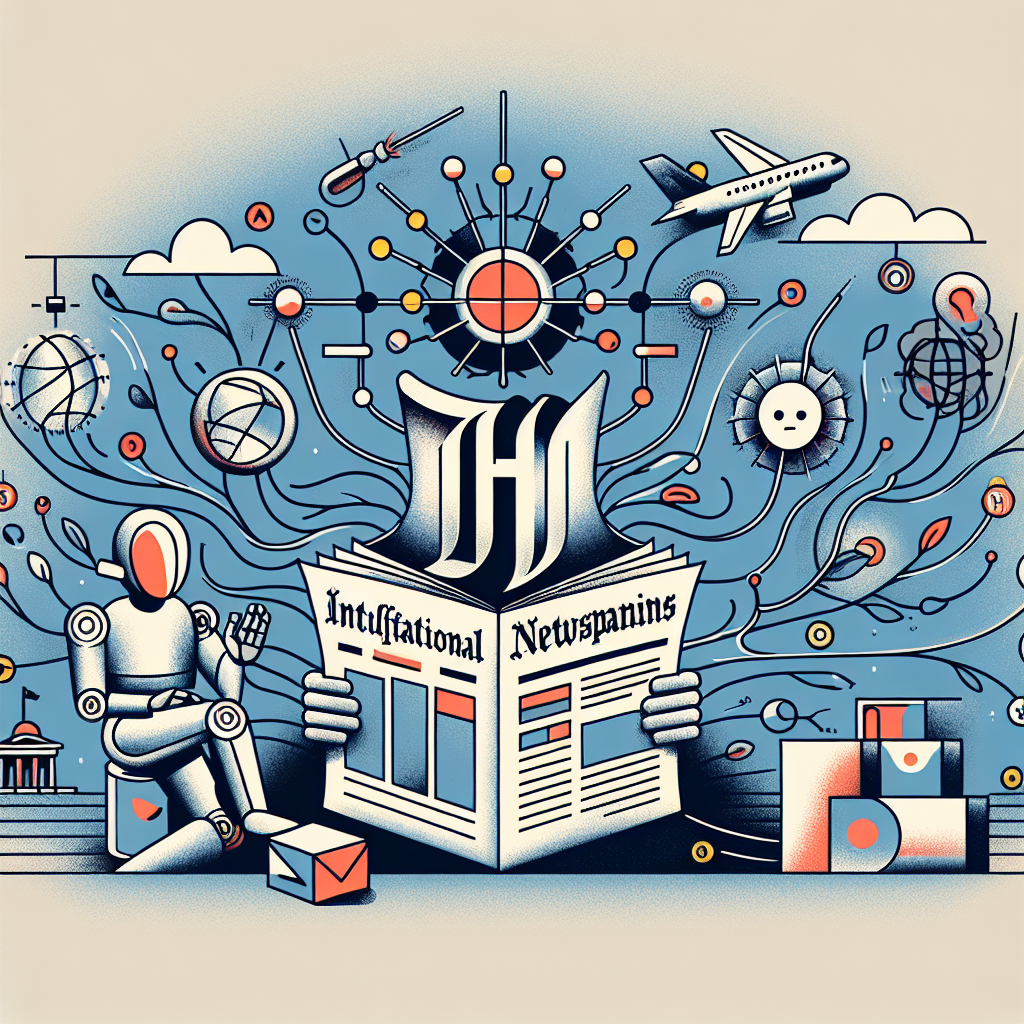-
Table of Contents
Financial Times Forms Strategic Alliance with OpenAI for ChatGPT Integration

The landscape of digital journalism is undergoing a transformative shift with the recent strategic alliance between the Financial Times (FT) and OpenAI. This partnership marks a significant step in integrating advanced artificial intelligence (AI) technologies, specifically OpenAI’s ChatGPT, into the realms of news production and consumption. This article delves into the nuances of this alliance, exploring its implications, potential benefits, and challenges, while providing insights into the future of AI in journalism.
Understanding the Alliance
The collaboration between Financial Times and OpenAI is designed to leverage the capabilities of ChatGPT, a state-of-the-art language processing AI model, to enhance the FT’s content delivery and user interaction. This integration is expected to transform how content is created, personalized, and delivered, aiming to increase engagement and satisfaction among its readership.
Objectives and Expectations
The primary objectives of this strategic alliance include:
- Enhancing the personalization of news content to cater to individual reader preferences.
- Improving the efficiency and speed of news reporting and distribution.
- Integrating interactive AI-driven tools to foster greater engagement and user retention.
- Exploring new business models and revenue streams through AI-driven analytics and content optimization.
By achieving these objectives, the Financial Times not only anticipates a growth in its subscriber base but also an improvement in reader loyalty and brand strength.
Benefits of ChatGPT Integration
The integration of ChatGPT into FT’s operations is poised to bring several benefits:
- Enhanced Content Personalization: ChatGPT can analyze reader data to tailor content according to individual preferences, potentially increasing reader engagement and satisfaction.
- Efficiency in News Production: AI can assist journalists by providing quicker research, summarization of information, and even suggesting story angles based on trending data.
- Interactive User Experience: ChatGPT can be used to develop interactive articles where readers can ask questions and receive information instantaneously.
- Innovative Revenue Models: With advanced data analytics, FT can offer personalized advertising, premium content, and other services tailored to the user’s interests.
These advancements are expected to not only enhance the user experience but also streamline internal operations, making them more efficient and cost-effective.
Case Studies and Examples
Several media organizations have already begun experimenting with AI in their operations. For instance, The Washington Post has used its in-house AI technology, Heliograf, to generate instant news reports on elections and sports events. Similarly, Reuters has developed Lynx Insight, which uses AI to help journalists analyze data, suggest story ideas, and even write simple reports.
These examples demonstrate the potential of AI in revolutionizing newsrooms by augmenting the capabilities of human journalists and improving the speed and accuracy of news reporting.
Potential Challenges and Solutions
While the benefits are significant, the integration of AI like ChatGPT in journalism also presents several challenges:
- Accuracy and Reliability: AI-generated content may lack the nuanced understanding of complex issues that experienced journalists bring. Ensuring the accuracy of AI-generated content is crucial.
- Ethical Concerns: There are concerns about AI in journalism potentially leading to job displacements. Moreover, the use of AI in news production raises questions about bias and manipulation.
- Technical Limitations: AI technologies are still in development stages and might not always understand context or subtleties of human languages effectively.
To address these challenges, FT and OpenAI plan to implement rigorous testing phases, continuous monitoring for ethical compliance, and ongoing training sessions for both AI models and human staff.
Future Prospects
The strategic alliance between Financial Times and OpenAI signifies a forward-thinking approach to news production and consumption. As AI technology continues to evolve, its integration into journalism is expected to deepen, bringing more sophisticated tools for data analysis, content creation, and reader interaction.
The potential for AI to unlock new narratives and deliver them in a highly personalized manner is immense. However, maintaining a balance between AI-driven efficiency and human judgment will be key to leveraging AI responsibly and effectively in journalism.
Conclusion
The partnership between Financial Times and OpenAI through the integration of ChatGPT is set to redefine the paradigms of journalism. With benefits ranging from enhanced content personalization to innovative user interactions, this alliance promises to elevate the standards of news production and delivery. However, addressing the challenges of accuracy, ethical concerns, and technical limitations will be crucial for realizing the full potential of AI in journalism. As this strategic alliance unfolds, it will undoubtedly provide valuable insights and set precedents for the future integration of AI in the media industry.

